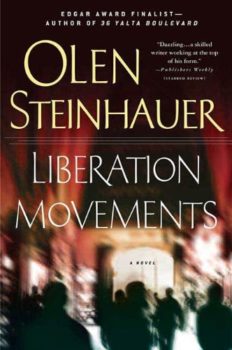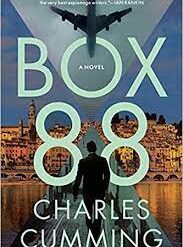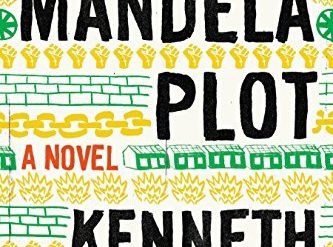
Mystery piles atop mystery in this fourth installment of Olen Steinhauer’s five-novel cycle of life behind the Iron Curtain. The previous books were set in decades past, the post-war 40s, 50s, and 60s. In Liberation Movements, the action takes place in 1968 and 1975, relating two seemingly unconnected stories that only much later merge, raising yet more mysterious questions.
Structurally, the plot revolves around Peter Husak and Katja Drdova, the former a Czech student in Prague who reacts with diffidence to the 1968 uprising against Communist rule, the latter a homicide detective in a neighboring country a few years younger than Peter whose story unfolds in 1975. As the action rockets forward through alternating chapters set in these two pivotal years, the connection between them slowly emerges. Along the way, we find ourselves caught up in an airplane hijacking engineered by Armenian terrorists, an investigation of a seemingly trivial seven-year-old murder, and troubling reports of parapsychological research by the secret police, and we catch glimpses of a mysterious secret policeman known to be close to the Lieutenant General who heads the secret police. Truth to tell, it’s monumentally confusing for a long time.
Liberation Movements (Yalta Boulevard #4) by Olen Steinhauer ★★★★☆
The five members of the homicide department form a loose thread that links all four novels. Though the cast of characters shifts over the years, there is always at least one principal actor who was on the scene in The Bridge of Sighs, the first book in the cycle, set in 1948. In Liberation Movements, the connector is Colonel Brano Sev, the close-mouthed secret policeman who occupies a desk in the homicide department, now an old man with a formidable reputation for toughness and results. (Emil Brod, a rookie in the first book, has become chief of homicide by 1975 but stays in the background.)
Brano Sev plays a central role in Liberation Movements, as does his young protégé, Gavra Noukas, a closeted gay man new to the Militia. Under Brano’s tutelage, Gavra’s life becomes enmeshed in the improbable story of a beautiful young woman with alleged psychic powers and her shadowy handler in the secret police.
Liberation Movements is rich with fully developed characters and the fascinating interplay of seemingly unrelated plotlines. The story of the 1915 Armenian genocide weaves in and out of the tale. Sadly, the book is flawed by the author’s failure to resolve the biggest mystery of all. It’s well worth reading nonetheless, for Steinhauer’s mastery of character development and his sure way with words.
For further reading
I’ve reviewed all five novels in this series at Olen Steinhauer’s brilliant Yalta Boulevard cycle set in Eastern Europe.
You might also enjoy my posts:
- Top 10 mystery and thriller series
- 20 excellent standalone mysteries and thrillers
- 30 outstanding detective series from around the world
- Top 20 suspenseful detective novels
Top 10 historical mysteries and thrillers reviewed here
And if you’re looking for exciting historical novels, check out Top 10 historical mysteries and thrillers reviewed here.
And you can always find my most popular reviews, and the most recent ones, plus a guide to this whole site, on the Home Page.




























Thanks, Mal! I love your book reviews and will check this one out!
If you have the time, read the whole cycle of five novels. It’s some of the best fiction I’ve read about Central Europe after World War II.